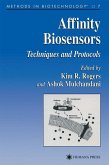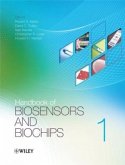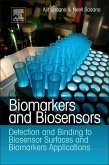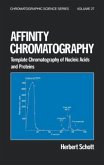The frequency of reports concemmg the interface of biological reco- tion elements to signal transduction technologies has risen dramatically over the last decade. Because any one of a wide variety of biological recognition elements (e. g. , antibodies, receptors, DNA, microorganisms, or enzymes) can theoretically be interfaced with any one of a wide variety of signal transducers (e. g. , optical, electrochemical, thermal, or acoustic), the potential range of devices and techniques can be bewildering. The purpose of this volume and the previous volume in this series is to provide a basic reference and startmg point for investigators in academics, mdustry, and government to begin or expand their biosensors research. This volume, Methods in Biotechnology vol. 7: Affinity Biosensors: Techniques and Protocols, describes a variety of classical and emerging transduction technologies that have been interfaced to bioaffinity elements (e. g. , antibodies and receptors). Some of the reasonsfor the expansion in the use of affinity-based biosensors include both advances in signal transduction technologies (e. g. , fiber optics, microelectromcs, and microfabrication) and the availability of bioafflmty elements. More specifically, with respect to biological recognttion elements, commercially and noncommercially produced antibodies directed toward a variety of analytes have become widely available. In addition, te- niques for the purification and stabilization of receptors have also significantly improved. As a result of these recent advances in the field, biosensors research and development projects are being pursued by mvestigators from a wide range of disciplines.
"I enthusiastically recommend this book for anyone involved in the biosensor fields. . .allows one to quickly become knowledgeable in the field. . .very well written and organized, and it has a good index. The chapters are written by the noted experts who have developed each sensor type. . . an essential complement to its companion volume, which covers enzyme and microbial sensors."-John I. Peterson, NIH reviewing for Analytical Chemistry








